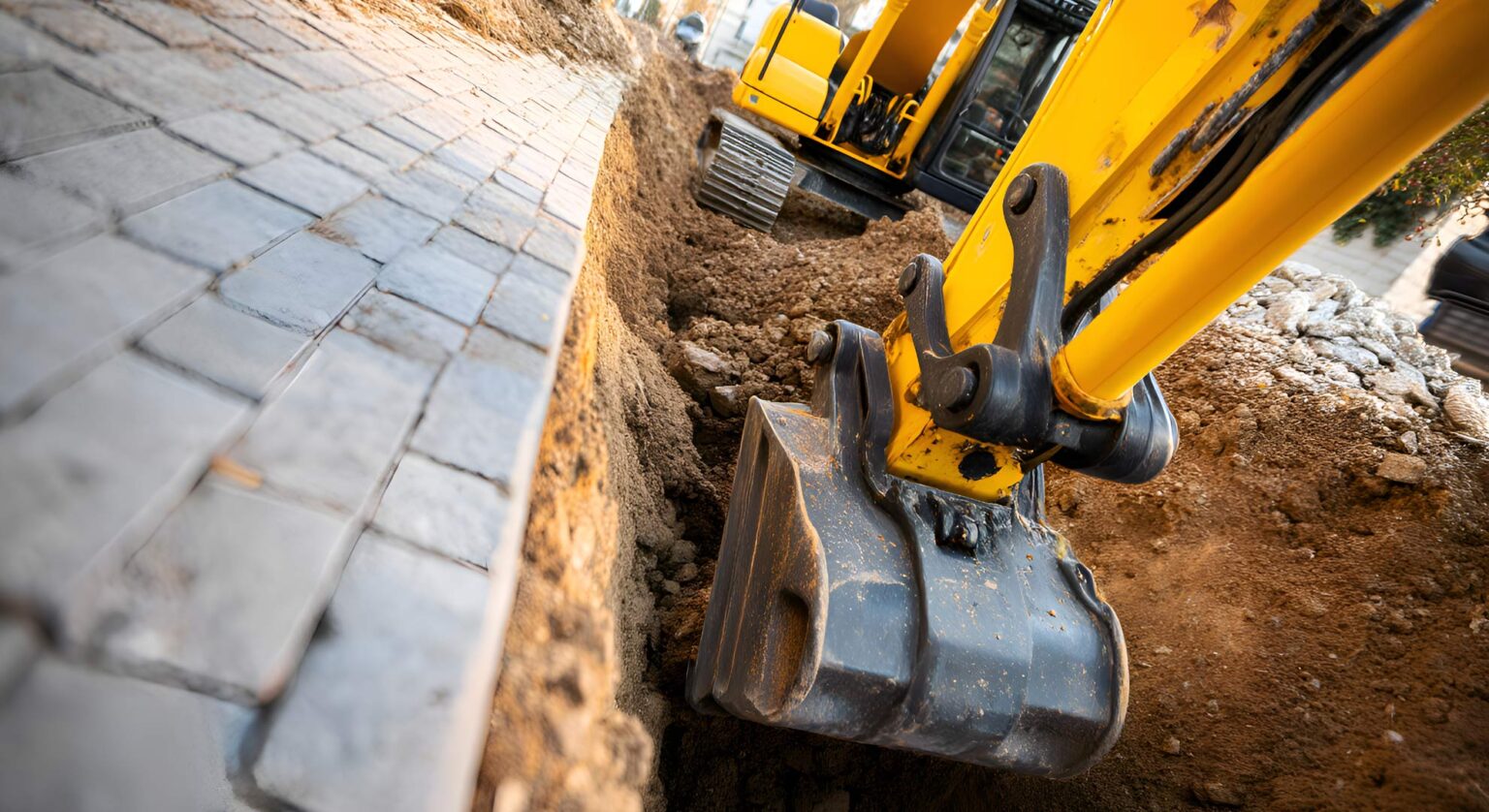What is the Problem?
With the UK’s ambition to achieve Net Zero by 2050, there is a significant rise in low carbon technologies, leading to increased demand for infrastructure upgrades:
- By 2035, all new cars are expected to be electric, necessitating over a million chargers
- Government forecasts predict 1.5 million heat pump installations per year.
The increasing demand for low carbon technologies necessitates significant upgrades to outdated mains cables. As most utility assets in the UK are located underground, excavation is essential for any installation, modification, repair, or replacement to these assets. Often these upgrades are required in well established town centres and housing estates.
Utility companies are conducting approximately 4 million excavations annually, costing approximately £5.5 billion with this investment expected to grow as we approach 2050. Electricity cables are often laid directly into the trench without ducting, making excavation unavoidable. In contrast telecommunications often use ducted cables, which allow for cables to be pushed through without the need for excavation.
Scottish & Southern Electricity Networks Distribution invests over £1 million per month in their low voltage (LV) network, with an estimated 50% of these funds being allocated to excavation and reinstatement activities.
Despite the scale of these operations, current excavation methods have remained largely unchanged, with standard trench widths applied universally. This approach generates substantial waste, which must be removed from the site for recycling, necessitating the use of fresh materials for backfilling. Moreover, there are limited opportunities to recycle the top bituminous layer of any trench. This process is not only time-consuming and costly but also presents environmental challenges.
Preferred Solution
Solutions are needed to minimise excavation impact by:
• Decreasing the volume of excavated material
• Enabling on-site recycling and reuse
• Shortening excavation time expediting project completion,
• Reducing disruption to road and pavement users.
Both existing and novel techniques will be considered, including:
• Open cut trenching
• Directional drilling
• Impact moling
• Coring and vacuum extraction (core and vac).
The industry shares best practice through collaborative groups such as Street Works UK, meaning any solutions would need to be developed with their input. Additionally, solutions must comply with Highways Authorities and Utilities Committee (HAUC) specifications for highway reinstatement.
Process information
To make a submission for this opportunity please sign in/register to the Energy Innovation Centre (EIC) hub. Complete the submission process on the hub and we will be in-touch with feedback and any potential next steps. If you have any queries, then please email us at [email protected].
The following can be expected following submission:
• Submissions will be reviewed by the EIC within one week of the closing date
• The EIC will share appropriate submissions with industry partners
• Industry partners will review the submissions within two weeks of receipt
• Successful innovators will be contacted by the EIC to discuss next steps.
The closing date for submissions to this challenge is 23:59 on 23rd July 2025.

